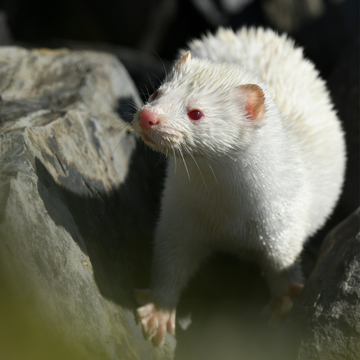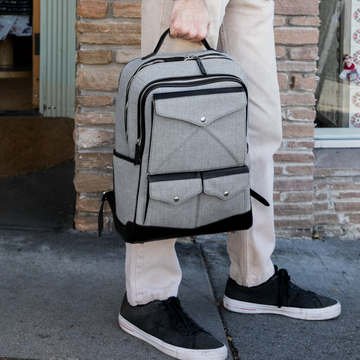The fashion landscape is undergoing a transformative shift as sustainability takes center stage. "Green is the New Black" has become more than a catchphrase—it's a rallying call for an eco-conscious revolution within the fashion industry. This article explores the emergence of eco-friendly fashion trends, highlighting how they are reshaping the way we view and engage with style.
The Rise of Eco-Friendly Fashion
Eco-friendly fashion trends encompass a spectrum of practices that prioritize sustainability, ethical sourcing, and reduced environmental impact. From clothing to accessories, brands are reimagining their design, production, and distribution processes to align with these principles.
Sustainable Materials: A New Aesthetic
Eco-friendly fashion embraces materials that tread lightly on the planet. Organic cotton, hemp, bamboo, and recycled fabrics are gaining prominence, offering stylish alternatives to traditional textiles while minimizing the use of harmful chemicals.
Circular Fashion: Closing the Loop
Circular fashion disrupts the linear "take, make, dispose" model by emphasizing reuse and recycling. Brands are designing products with longevity in mind and exploring innovative ways to repurpose materials, reducing waste and conserving resources.
Slow Fashion: Quality Over Quantity
Slow fashion encourages mindful consumption by advocating for fewer, high-quality pieces that transcend fleeting trends. This approach fosters a deeper connection with clothing and discourages the rampant overconsumption that fast fashion encourages.
Upcycling and Vintage Revival
Upcycling transforms discarded garments into new creations, breathing new life into old items. The resurgence of vintage fashion also reduces the demand for new production and highlights the charm of timeless styles.
Local and Artisanal Craftsmanship
Supporting local artisans and craftsmanship reduces the carbon footprint associated with global supply chains. Handcrafted pieces also celebrate cultural heritage and uniqueness in a world dominated by mass production.
Transparent and Ethical Practices
Transparency in the fashion industry means being open about production processes, labor conditions, and sourcing. Ethical practices ensure fair treatment of workers and respect for human rights throughout the supply chain.
The Impact of Eco-Friendly Fashion
By embracing eco-friendly fashion trends, consumers contribute to a more sustainable future. These choices drive demand for greener practices, encouraging brands to adopt ethical and environmentally conscious approaches.
The Role of Influencers and Media
Influencers and media play a crucial role in amplifying eco-friendly fashion trends. They inspire and educate their audiences, creating a ripple effect that encourages more people to adopt sustainable fashion practices.
The Future of Fashion: A Collective Effort
As more individuals embrace eco-friendly fashion, the industry responds with innovation and change. Brands, consumers, influencers, and policymakers all play a vital role in shaping a fashion landscape that values both style and sustainability.
Conclusion
"Green is the New Black" encapsulates a powerful message: fashion's future is rooted in sustainability. Embracing eco-friendly fashion trends isn't just about looking good—it's about feeling good and making choices that resonate with our values. By choosing ethical and environmentally conscious fashion, we can collectively weave a more vibrant, beautiful, and responsible narrative for the industry.
FAQs
What does the term "Green is the New Black" mean in the context of fashion?
"Green is the New Black" signifies the growing trend of prioritizing eco-friendly and sustainable practices in the fashion industry, akin to how the color black is a classic and timeless choice in fashion.
How does sustainable fashion contribute to environmental preservation?
Sustainable fashion minimizes environmental impact by using eco-friendly materials, reducing waste through circular practices, and advocating for ethical production methods that respect both people and the planet.
What is the significance of choosing sustainable materials in eco-friendly fashion?
Sustainable materials like organic cotton and recycled fabrics reduce the use of harmful chemicals and minimize resource consumption, promoting a more environmentally friendly fashion industry.
What is the concept of circular fashion and how does it benefit the environment?
Circular fashion aims to close the loop by designing products for longevity and recyclability. It reduces waste, conserves resources, and promotes a more sustainable approach to fashion consumption.
How can consumers practice slow fashion and its principles?
Slow fashion involves buying fewer, higher-quality items, focusing on timeless styles, and cherishing the pieces you own. This approach encourages mindful consumption and reduces the pressure to constantly buy new clothing.
How can I support local artisans and craftsmanship in the context of eco-friendly fashion?
You can support local artisans by purchasing locally made clothing and accessories. This not only reduces the carbon footprint associated with long supply chains but also celebrates cultural heritage and craftsmanship.
How can individuals promote eco-friendly fashion trends beyond their personal choices?
Individuals can promote eco-friendly fashion by educating others about sustainable practices, supporting brands that prioritize sustainability, and advocating for policy changes that encourage greener fashion practices.







